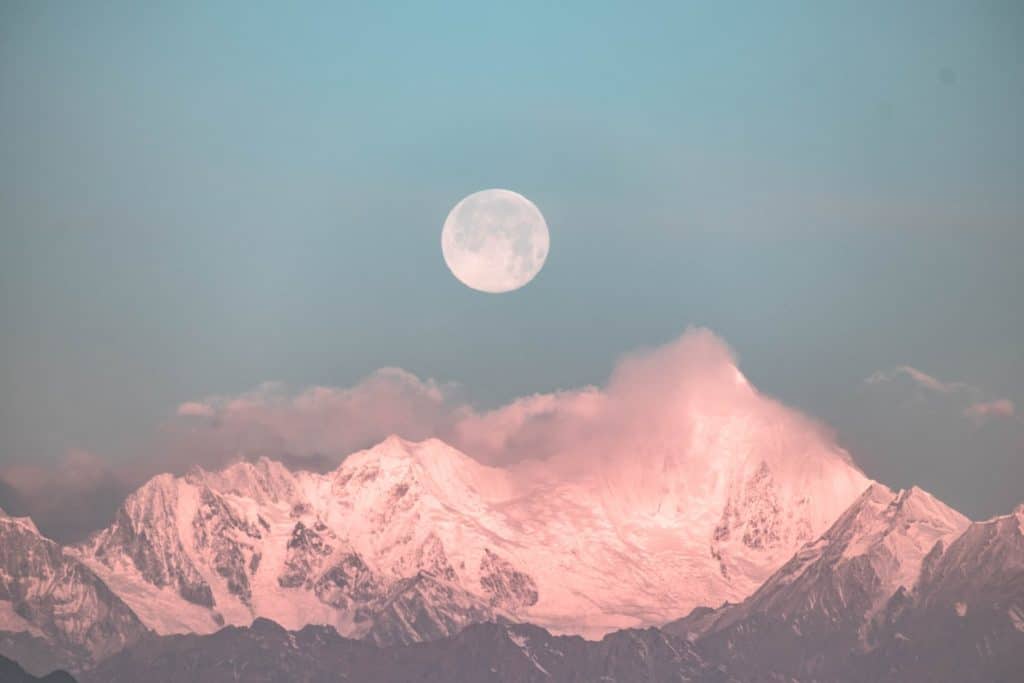
Since the very beginning, the moon has held a mystical place in the history, and in the hearts of every woman, mystic, witch and healer.
In ancient times, Moon Gods and Goddesses have had an influence in mysterious myths, and folklore. The Triple Moon Goddess symbolized the the three phases of maiden, mother and crone, representing the passing of time from fullness, to the darkness, from life to death, and all the transitions in between.
The moon’s influence and energy on the ocean’s tides, agriculture, fertility, were widely known and revered.
To me the moon has always been something of a mystery. She awakens my intuition, my inner magic, and represents a chance for new beginnings and renewal. For transformation and feminine power.
But most of all the full moon is a time of manifestation. Of searching deep inside to revel the shadows and bring them into the light.
A time to be nurtured, a time of reflection, and a time of wholeness.
The Full moon can bring us clarity and illumination, and is a powerful time to focus on our energy in the direction that serves us best. It is also a good time to write down a list of what is no longer serving us and is ready to be released.
There are typically twelve named full moons every year according to sources of ancient customs and folklore. These names served the purpose of helping early people, particularly Native Americans and other cultures to survive. The names given each recurring full moon also reminded tribes to keep track of the seasons. (As European settlers moved in, they began to use similar names as well.)
Depending on the month you are in while you take this workshop, you can connect to this moon and it’s characteristics for that particular month.
January: The first full moon of the year is called the Wolf Moon. (I recorded this workshop on this moon) This name comes from the time of year when the weather is cold and snowy and in some places, the wolves run in packs, prowling for food. It is the the month of January that the wolves howl the most. (This is also called the “Moon after Yule” since it occurs after the December holidays.)
February: This month’s full moon is called Snow Moon. This name was used because this month has the heaviest snowfalls in much of the north. It has also been called the “Full Hunger Moon” because bad weather kept the hunters out of the fields due to a lack of food.
March: The Worm Moon welcomes early spring. March is the month when the ground begins to warm in the north, and the earthworms return to the surface, giving this moon’s name. Sometimes this one is also called the “Full Sap” Moon because this is the month when maple trees are tapped to make syrup.
April: The Pink Moon is the first full month of spring in the northern hemisphere. Also called the Sprouting Grass Moon or Fish Moon, it heralds the arrival of new sprouts, flowers, and mosses. It also welcomes warm spring weather.
May: This month the Flower Moon is named for the month of May when flowers typically bloom and blossom, and farmers plant corn, leading to Corn Planting Moon.
June: Strawberry Moon is named after this month when strawberries become ripe. In Europe, people also called this one the Rose Moon, named after the flower that typically comes into full bloom in the month of June.
July: The Buck Moon, named for the time that buck deer start to sprout their new antlers, the moon of July. This month is also called this the Full Thunder Moon because of the frequent wild summer storms.
August: In the northern hemisphere late summer brings the Barley Moon, also called the Fruit Moon. August heralds the beginning of the harvest in the north, so this month’s full moon is named for that. It is also called the Full Sturgeon moon, in honor of the fish.
September: Harvest Moon or Full Corn Moon is a very important moon for farmers. September marks the harvest period for some of the most important food grains in the Northern Hemisphere. In September, the Full Moon that rises close to the equinox rises close to sunset. Traditionally, Farmers often worked until well after sundown, and under the light of this moon harvesting and storing grains for the winter. Thus, it gained the name “Harvest Moon” to refer to the full moon that occurs closest to the September equinox. This full moon is also important to Pagans and Wiccans.
October: In this month, Hunters Moon or Blood Moon occurs marks the time for hunting deer, elk, moose, and other animals that were used for food. The name goes back to times where hunting to stock up food for the winter was vital, especially in various native American tribes. This moon marked a special day and night of feasting.
November: In a very late autumn month we have the Beaver Moon. In ancient times, November was thought to be the best time for hunting and trapping Beaver. Another name given is Frosty Moon, because of the cold weather.
December: As winter fully arrives, Cold or Long Nights Moon marks the time of year in the north when the days are shortest and the nights are longest. This is why December is also given the name of the Long Night Moon.
Here are some fun and interesting facts I found on Youtube about full moons…

